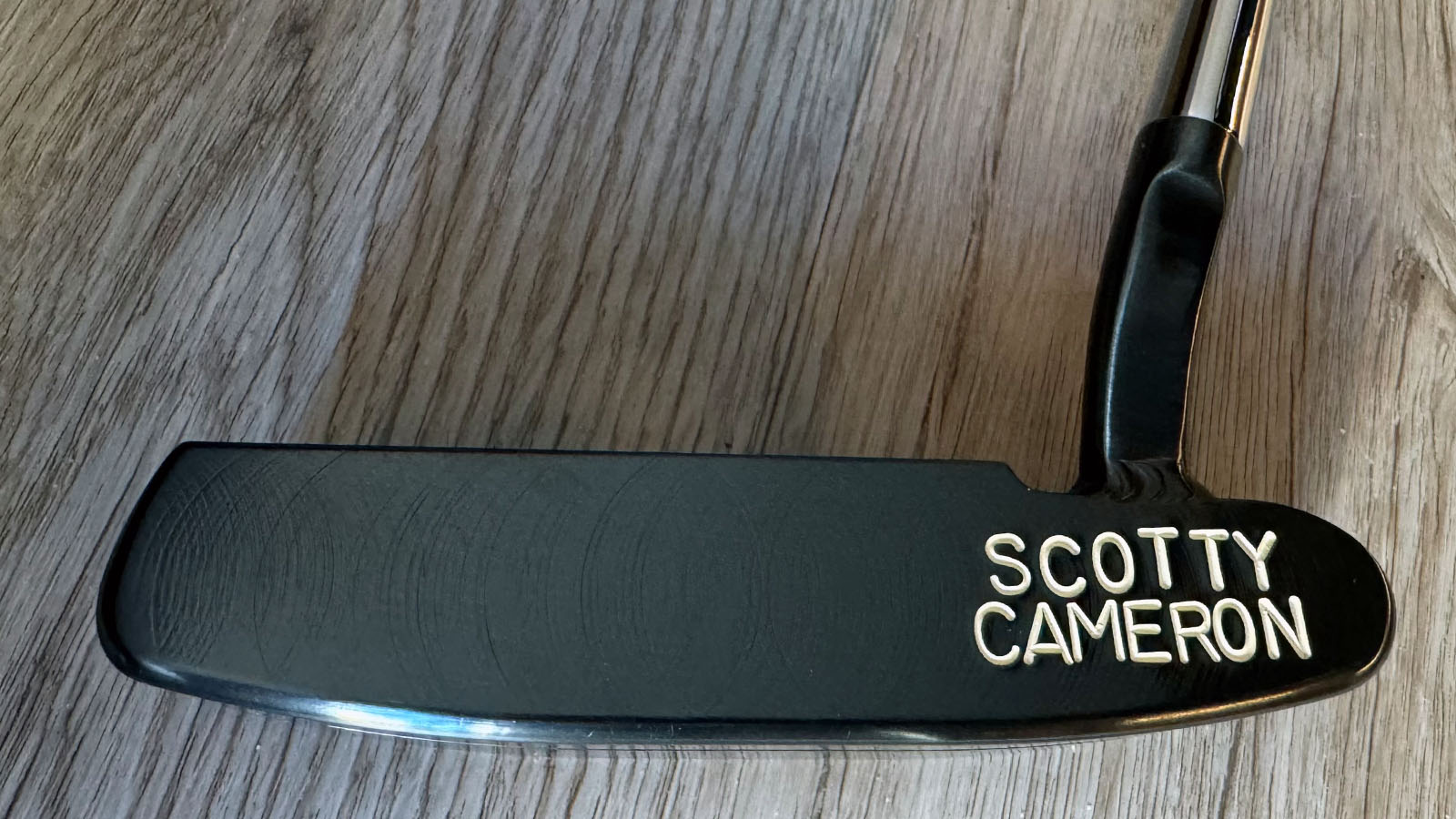Bill Vogeney—or “Vog” as he’s known in enthusiast circles—is a long-time Scotty Cameron collector with an extensive collection of rare and hand-crafted putters from Scotty’s early career. From time to time, we will feature articles from Vog in this new series to provide context, history and interesting back-story to Scotty’s evolution as a putter maker.
If you talk to a Cameron collector with a good eye for the Santa Fe design, you might be surprised at what you learn. There are a lot of nuances that make studying and collecting the Santa Fe a lot of fun. The Santa Fe is essentially a Newport or Newport-like head with a neck that’s often called a flow neck, or a pinched flow neck (also a flare neck). Yet over the years Scotty has experimented with different looks to the neck. The Sante Fe has also changed based on changes in the design of the head. In April I shared the history of the Newport design, so it helps to refer to the generations of the Newport as a starting point for the Santa Fe, which has been called the Newport 1.5 for 20 years:
- Classic I, 1993-1994 prior to Scotty joining Titleist
- The OG Newport, 1995-1999
- The MilSpec Newport, 2000-2001
- The Stainless Studio Style 2002-2006 including the version with the GSS insert
- The 009 Tour Newport starting in 2004 and 009 Masterful in 2015
- The Studio Select 2008
- The updated Studio Select 2012-2019
- The Special Select 2020-2022
- The Super Select 2023-2024
THE FIRST SANTA FE - SCOTTY'S EARLY DESIGNS
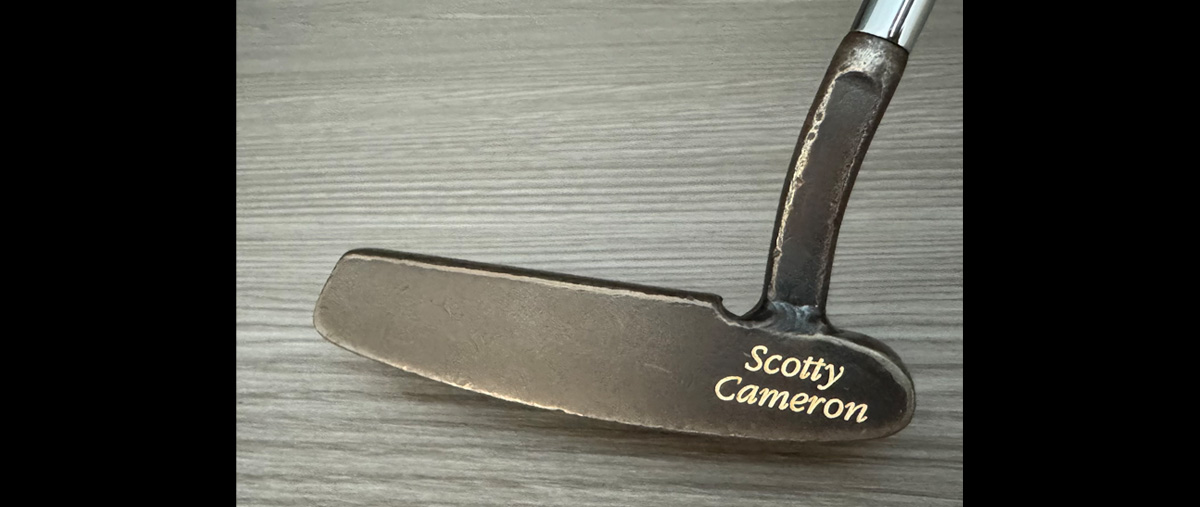
Above: Here’s one of the first-ever Santa Fe styles from 1992/1993, made from a pre-Classic I prototype with a welded flow neck. This putter is an example of how Scotty can vary the neck to produce slightly different playing characteristics. One aspect of a flow neck design is offset. I characterize offset as a function of the shaft diameter. A model like the original Santa Fe made from 1996 to 1999 typically has 1/2 shaft offset. My eye tends to prefer 1 full shaft of offset. This early prototype barely has 1/4 shaft offset. How does it play? In general, less offset means more toe flow.
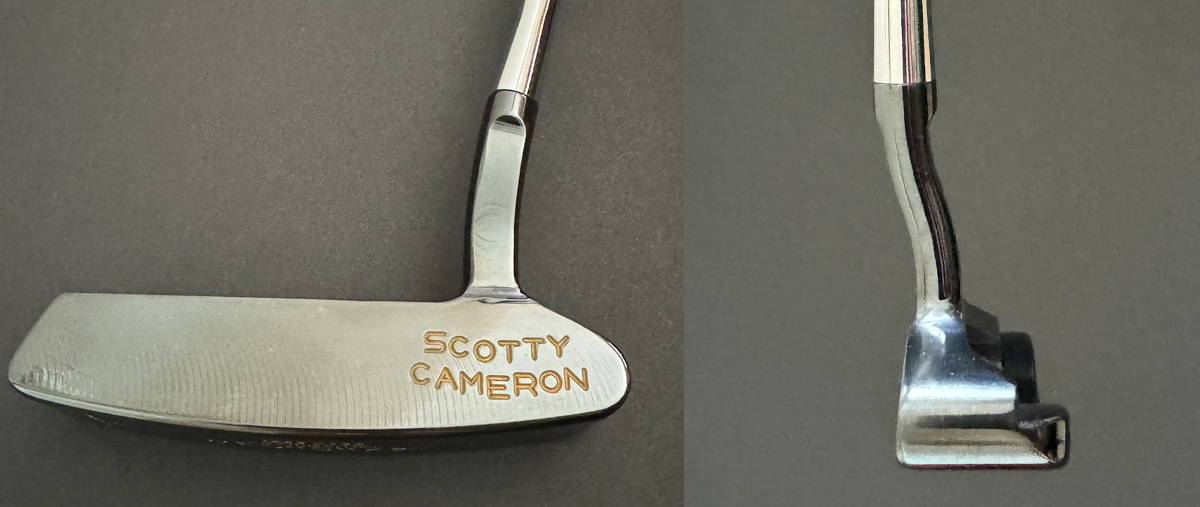
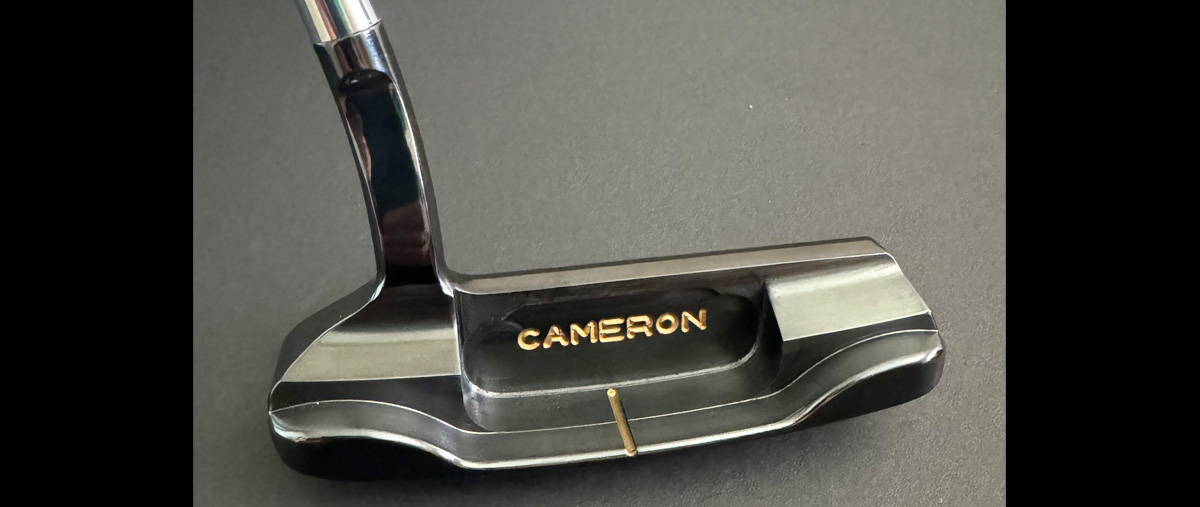
Above: The first production Santa Fe style was the pre-Titleist Classic 1.5. This is an early Xperimental Prototype from 1993 with ½ shaft offset. Notice the topline of this putter; unlike the previous prototype made from a Classic I head, this was its own design and made with a topline that does not have the little cup or swoop at the base of the neck as the Classic I has. At address this gives the player a slightly cleaner look.
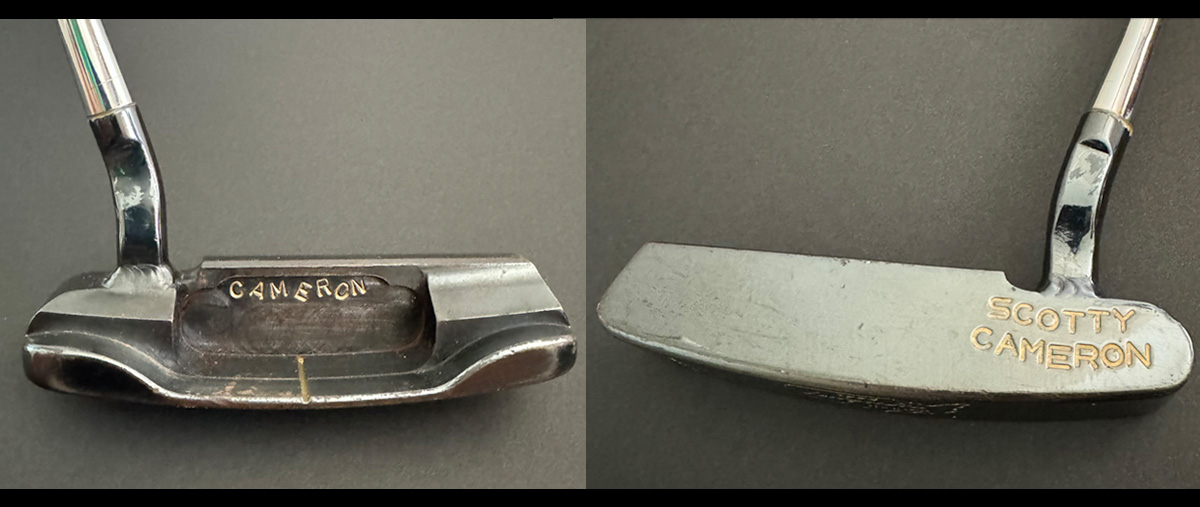

Above: This next putter is a curiosity. Before Scotty joined Titleist the Classic I was his most popular putter. The 1.5 did not sell as well (outnumbered at least 10 to 1 compared to the Classic I), so when Scotty had a tour player who wanted this 1.5 style, he might not have had a ready-made head. This is a Classic I “Augusta Winner” with a welded 1.5 neck that is also stamped CAMERON on the back, which tells me this was something Scotty made for the tour to allow his name to seen more easily on TV. Why would Scotty use this Augusta Winner head and weld the neck unless he did not have 1.5 heads available at the time? This example has a shorter neck with less offset compared to the production Classic 1.5. It has a lot of toe flow!
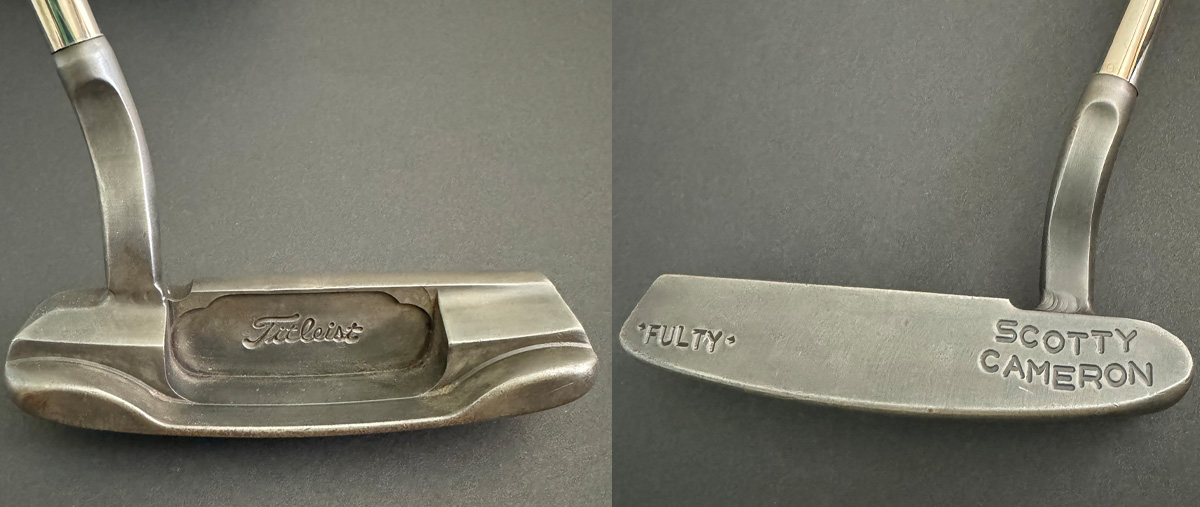
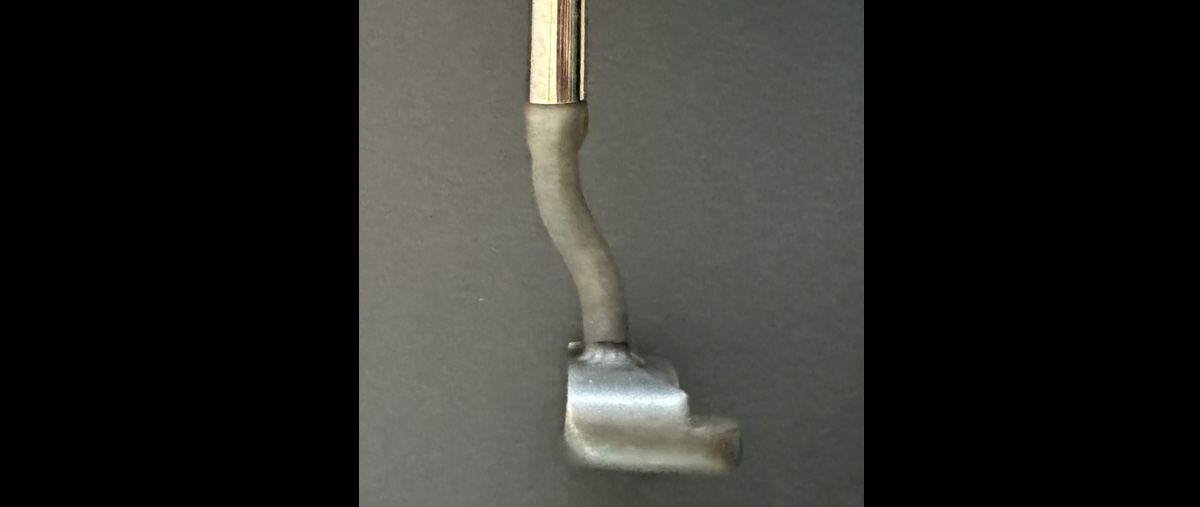 Above: Here's another example of a welded neck 1.5 made with a Newport/Classic I head. There’s a lot to talk about on this one. Made for a former PGA Tour player from South Africa, it has Scotty’s patina finish, which he would make for players who did not like a shiny black oxide finish. South Africa tends to be very hot and sunny, which explains the choice of finish. In my feature on the evolution of the Newport design, I shared how Scotty would soften the lines for certain tour players to produce a putter that looks like it’s melting into the ground. This one has had a lot of that work; look at the back of the putter right above the cavity compared to the cavity of the Xperimental Prototype 1.5. There is only a very thin strip of metal above the cavity into the topline on this one in comparison. What does that mean?
Above: Here's another example of a welded neck 1.5 made with a Newport/Classic I head. There’s a lot to talk about on this one. Made for a former PGA Tour player from South Africa, it has Scotty’s patina finish, which he would make for players who did not like a shiny black oxide finish. South Africa tends to be very hot and sunny, which explains the choice of finish. In my feature on the evolution of the Newport design, I shared how Scotty would soften the lines for certain tour players to produce a putter that looks like it’s melting into the ground. This one has had a lot of that work; look at the back of the putter right above the cavity compared to the cavity of the Xperimental Prototype 1.5. There is only a very thin strip of metal above the cavity into the topline on this one in comparison. What does that mean?
Scotty worked down the topline, perhaps to reduce some weight (certainly this head is lighter as a result) and to create more of a low-slung look to the blade. You might look along the bottom of the face and see some different lines as well. Scotty really worked on the sole, creating more radius along the edges to reduce the likelihood of the putter getting caught on grainy greens (as found in South Africa) and more heel-to-toe curvature in general. Finally, check out the Titleist stamp on this pre-Titleist head. Meaning? This is often referred to as a “transitional” putter, made from a pre-Titleist head but stamped Titleist for the PGA Tour survey, which tracks what clubs the players are using. The first Scotty Cameron Titleist Santa Fe would not appear until 1996, so Scotty likely made this in the 1995 timeframe.
A ONE-OF-A-KIND SANTA FE
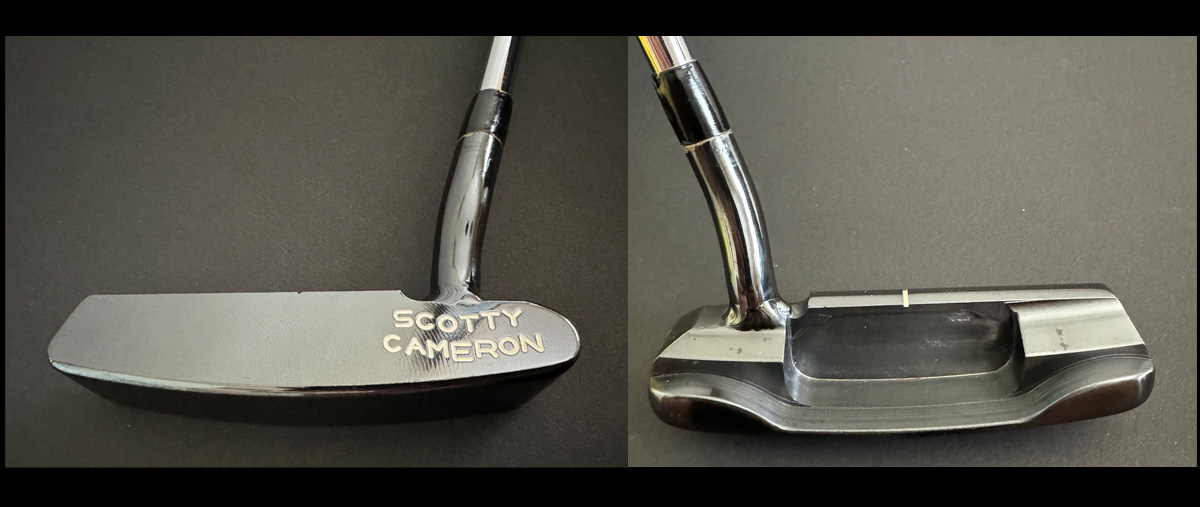

Above: This next example is another one-of-a-kind Santa Fe. Made from a Classic I head, dating from 1993 to 1994, it has a welded round neck with a full shaft offset. This came from the stash of a multiple-major champion, you might notice a feature I’ve never seen on another Santa Fe--a ferrule! I’m not sure this was made specifically for the player, as I’ve seen quite a few of his prior putters with his initials stamped on the blade, so my guess is that Scotty made this as a true “tour sample” and wanted some feedback on the look of the round neck and the ferrule!
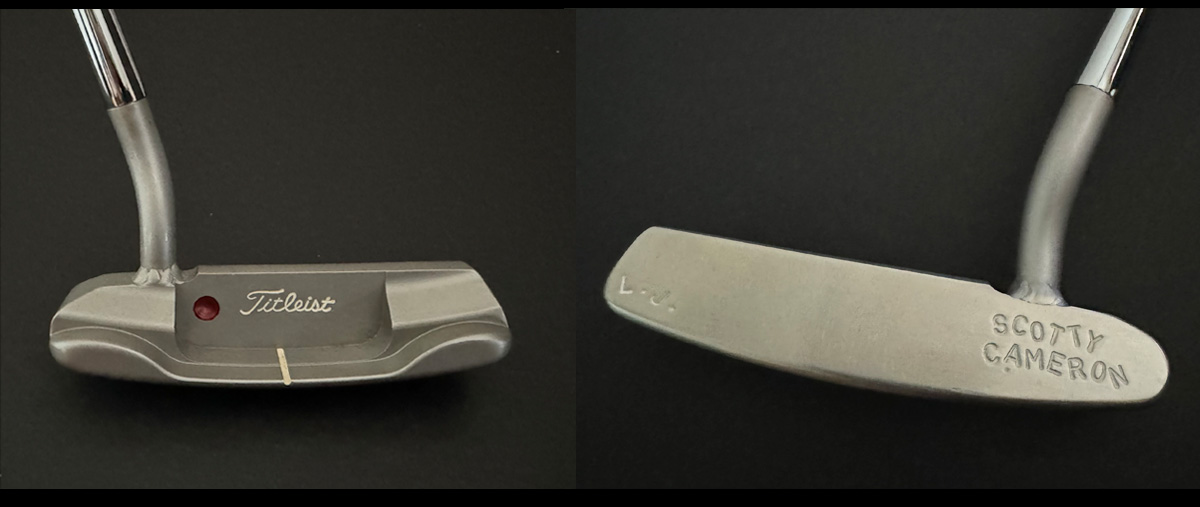
Above: Here’s a round neck Santa Fe style tour putter, likely made in the 2000-time frame, this one a GSS solid cavity Newport 1.5 made for a two-time US Open winner! This is my favorite Santa Fe I own, as it has a full shaft of offset; to my eye it screams “putt maker.”
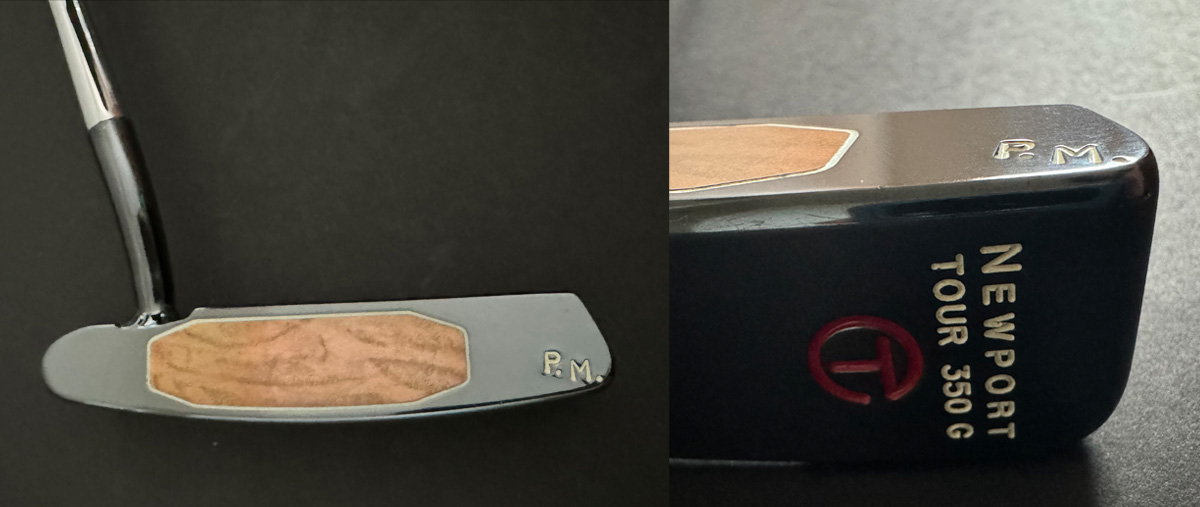
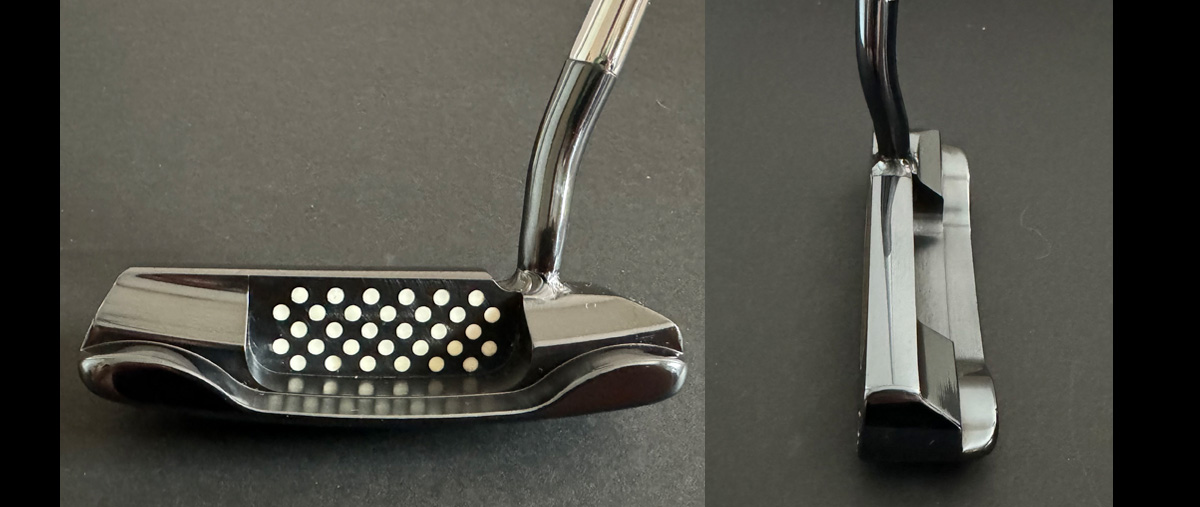
Above: For the lefties out there, here’s one you’ll really enjoy. A lefty Tour Newport 1.5 Teryllium with a welded round neck. There’s less than ½ shaft offset as the player this was made for tended to have a lot of arc to his stroke. As a result, he mostly played a heel shafted putter in his prime. While this is not heel shafted, the limited offset creates a similar feel.
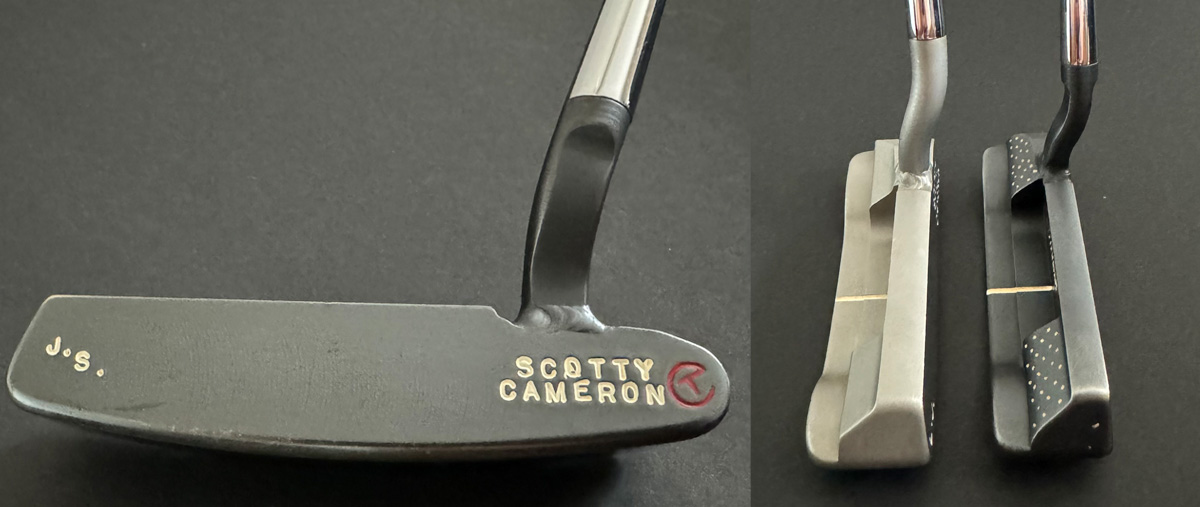
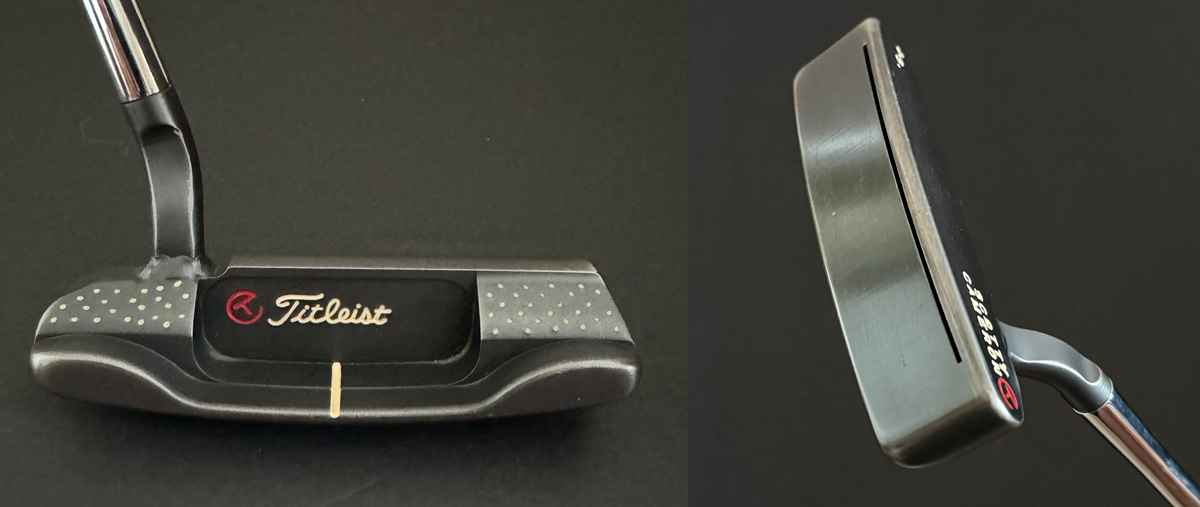
Above: Here’s a tour Santa Fe made with the 2000-2002 MilSpec Newport head with some serious eye appeal. You can see the rounded shoulders of the MilSpec with a pinched flow neck and Scotty’s famous snow stamped on the shoulders. Check out the placement of the sound or “beach” slot in the sole; it sits in the face and does not come up through the cavity of the putter. I also provided another comparison between this and the round neck GSS Newport 1.5 as the neck on this is shorter with less offset.
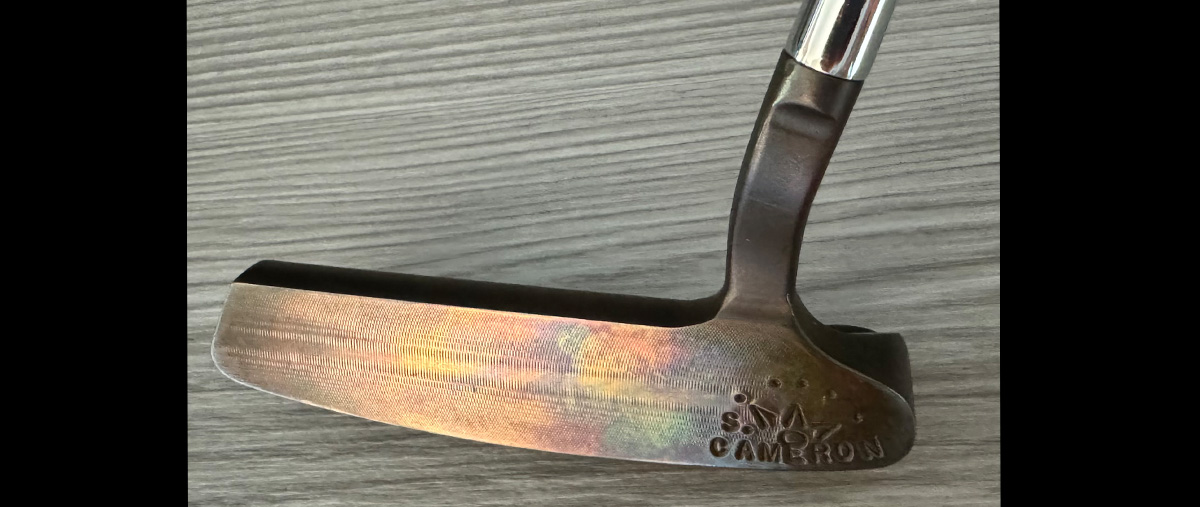
Above: This oil can finish tour Santa Fe appears to be as close to the original Santa Fe as you’ll see here. The neck and lines look just like the production model Santa Fe from 1996.
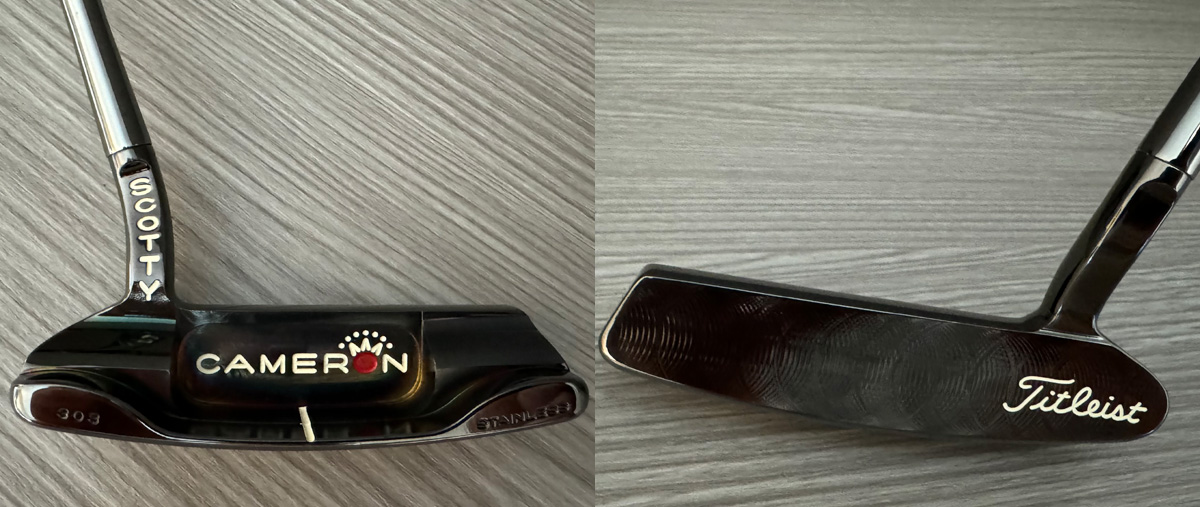
Above: This next Santa Fe is the limited edition 2004 (the year made and quantity) Newport 1.5 black pearl. For so many Santa Fe fans, THIS is the putter that ignited their flame for the design. While some Cameron fans may not ever take the plunge on a tour putter, this is a great collectible that’s attainable for most everyone. As a bonus, the black pearl finish has been “retired” by Scotty and is becoming more popular with every year that passes.
DIFFERENT FINISHES AND NECK STYLES
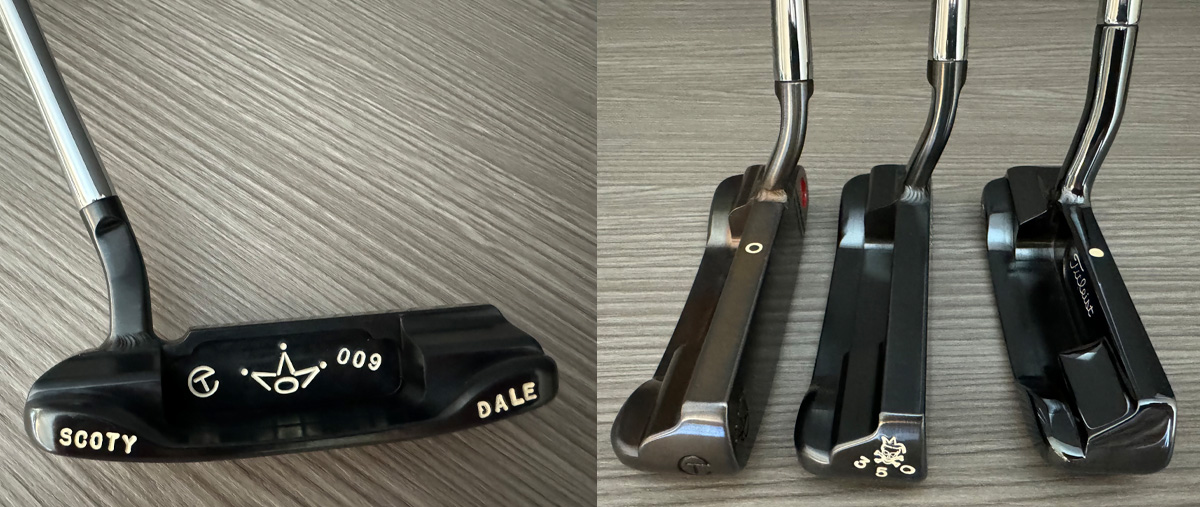
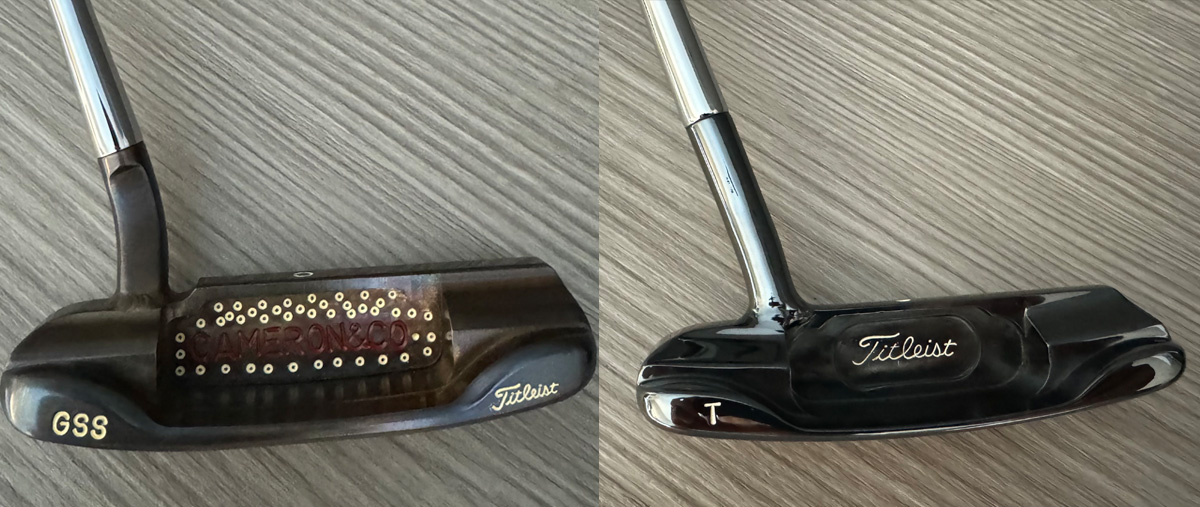
Above: Here is a group comparison that shows a lot about the nuances of the Santa Fe design. From left to right, a Newport 1.5 Tour in German Stainless Steel (GSS) and chromatic bronze finish, a 009 1.5 in black oxide and a late 90s Tour Santa Fe with a welded round neck. Also, look at the cool features--stamps and additional milling in the cavity (removing weight) on each of these as well. Three putters, three different necks, three different neck lengths and three different feels. When it comes to making putters for the best players in the world, design is not only about function like toe flow; the looks of a putter are critical. Each of these necks look differently at address. The placement of the round neck on the right (closer to the centerline of the putter) should result in a feel more like a center shafted putter like a Bullseye. The additional offset and longer neck of the black oxide 009 (compared to that gorgeous chromatic bronze) should produce less toe flow and appeals to the player who just likes to have their hands a little further ahead at address. 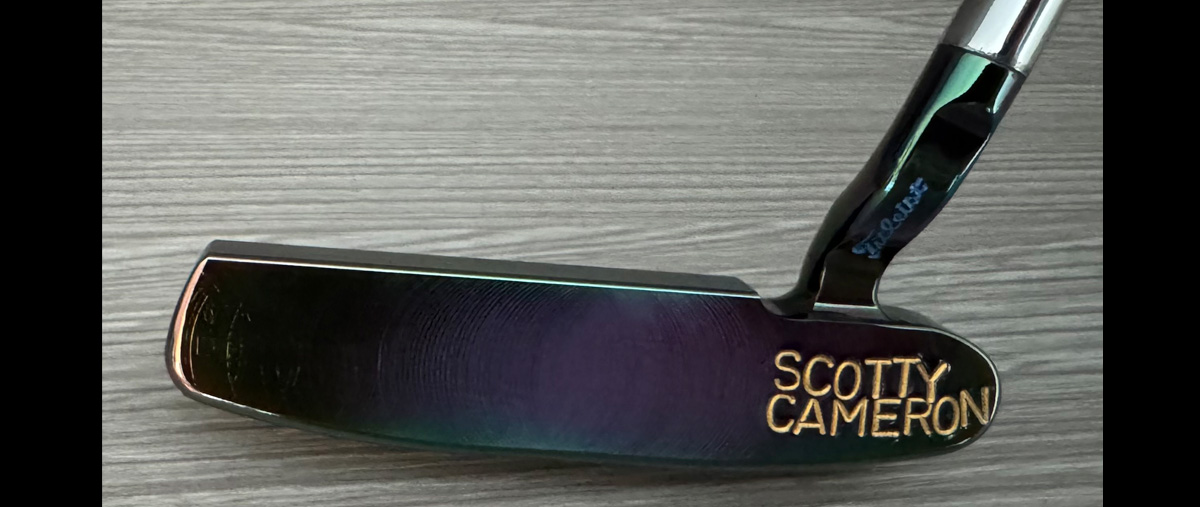
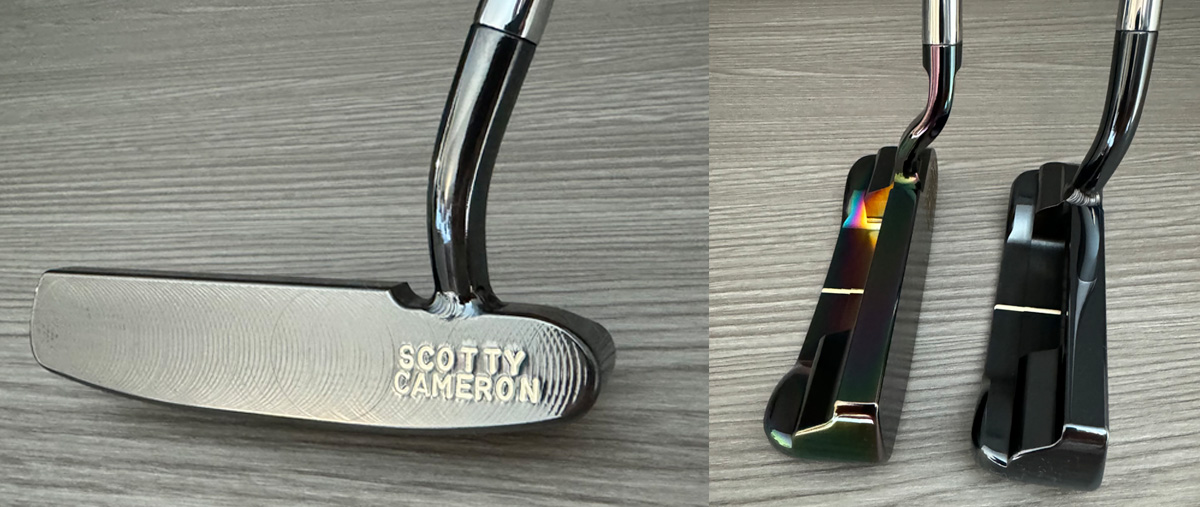
Above: This next group shot pairs a black pearl finished 009 1.5 with a welded round neck 009. I don’t know what to call the version of the Santa Fe neck on the black pearl, but it has an extra bend to it resulting in more offset. Rarely seen, this might be my favorite variation of the Santa Fe or Newport 1.5 neck. Hitting putts with this, I can clearly feel a little less toe flow and it’s closer to the performance of a Newport.
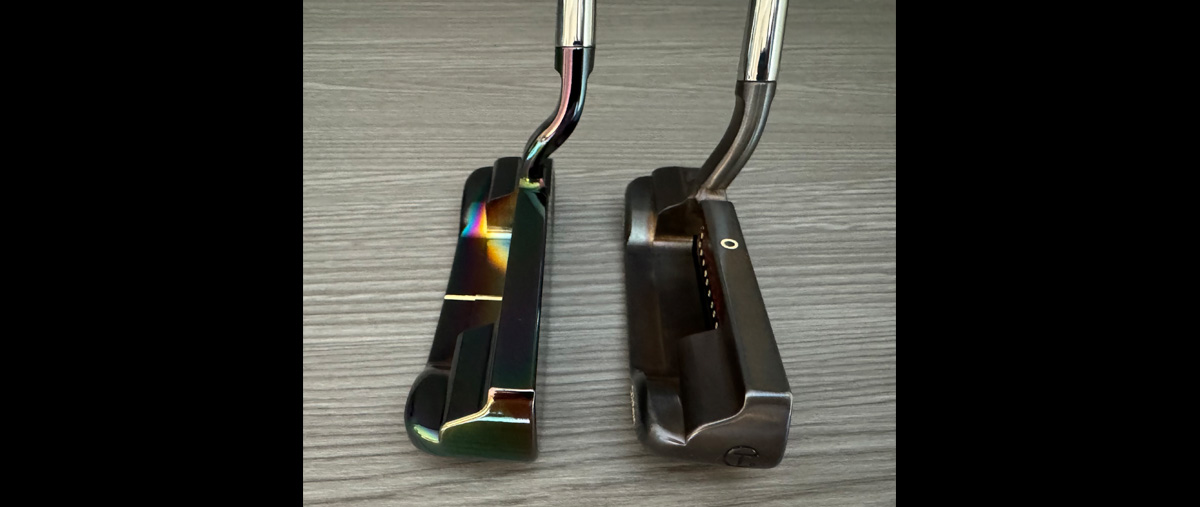
Above: Here’s one final group shot comparing that “bendy” black pearl 009 1.5 (that’s what I’ll call it-the bendy neck!) with the GSS chromatic bronze 1.5.
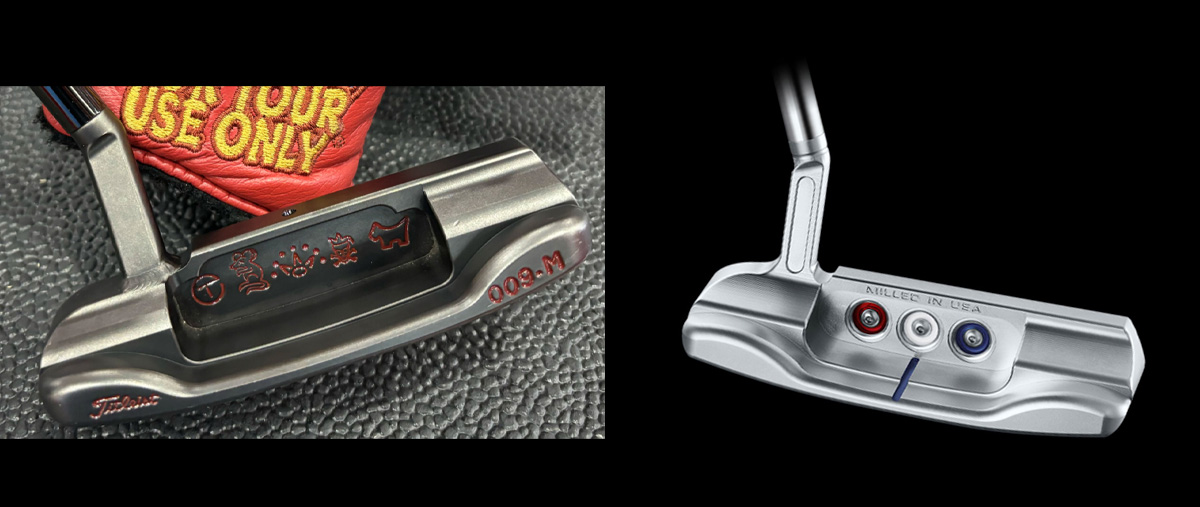
Above: What’s the latest and greatest version of the Santa Fe/Newport 1.5? Tested on tour by major champion Cameron Smith on his Tour-only 009 Masterful, the jet neck also made an appearance on the Champions Choice Newport 1.5 Plus Button Back. The flow jet provides the same length and offset of the old Santa Fe neck but in a streamlined look.
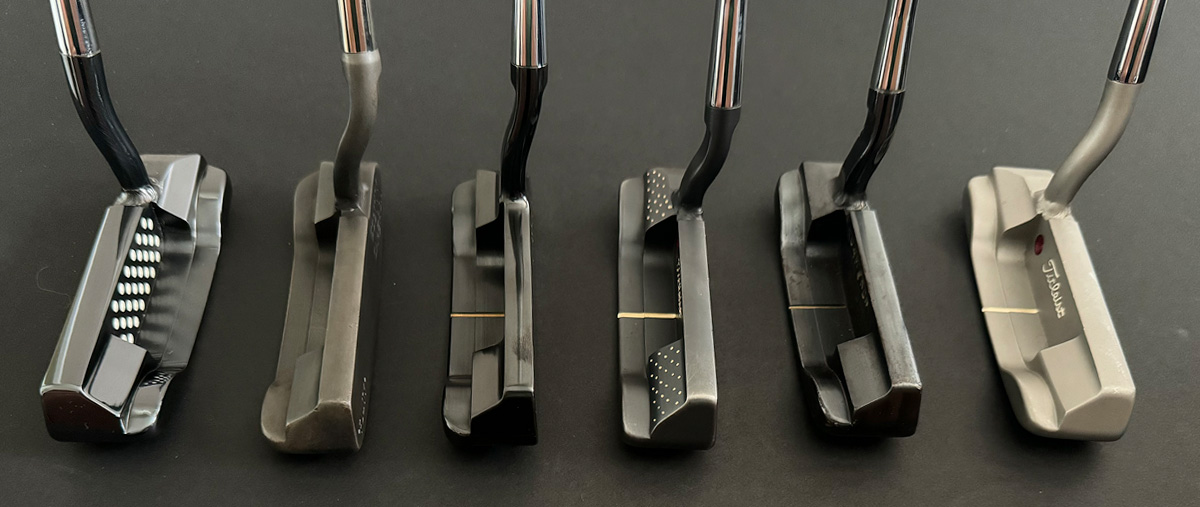
For me, writing this was a bit of a revelation. I have always gamed a plumber’s neck model like the Newport or Newport 2. Those fit my stroke the best, so my gamers and much of my collection-only putters tend to have a plumber’s neck. However, I also enjoy collecting old handmade “Scott” Cameron putters and other blade-like styles from the tour, and they tend to have welded round necks or pinched flow necks. As you can see, while I also have some Santa Fe’s in my collection, I can’t say I ever sat down and analyzed the differences in these necks. If you’re looking for a new direction for your collection or a gamer for your bag that matches the arc in your stroke, you might have a lot of fun starting with the Santa Fe.
Take a look at a few other shots of some of my favorite putters in the slideshow below. Enjoy!

